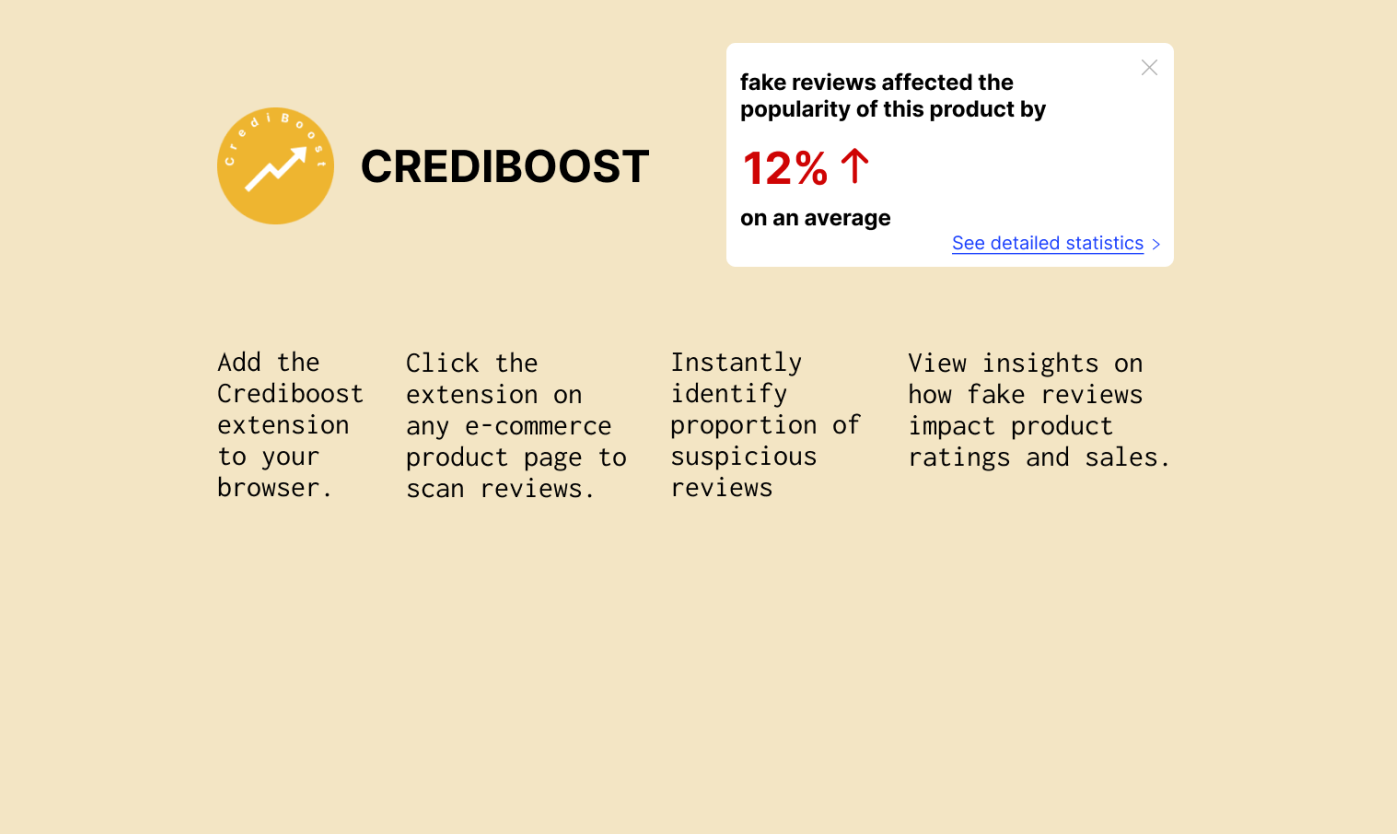Crediboost Team
NextGenAI Fellows
"How NOT to Build a Project: Our journey of learning to build a product that people actually care about, pivoting from misinformation detection to fake review analysis."
How NOT to Build a Project: Our Journey of Learning to Build a Product Coming into this program we didn't quite know what we'd be getting ourselves into, we only had a broad idea what sector we wanted our project to be in and nothing too specific. This is our story of learning to pivot, research, and ultimately build something that people actually care about.
The Initial Struggle: Too Broad, Too Ambitious
Our initial project topic - wanting to measure the impact of misinformation online was a little too vague and a little too ambitious, every time we spoke to Swapneel he advised us to narrow it down, be more specific, decide what exactly we wanted to do, making us realise that we were diving headfirst a little too fast into waters a little too deep.
We tried a lot of things, fixating into a specific sector or specific type of misinformation spread, maybe a specific platform or a medium but it all seemed a little too ambitious to do with the time and number of people we had.
Learning to Build Products, Not Projects
This program always highlighted the impact of creating a product not a project, we didn't just have to code something we had to find people that care about what we do, find someone that would actually use it, pay for it and look into the current market.
So we looked into research venues, creating a market segment, trying to see who would actually care about work being done in this area. With every bit of research we were doing it became clear to us that we were going too fast towards a dead end.
The Pivot: Finding Our Opening
One of the days pouring over our research we saw a small opening, maybe we were on the broadly correct path, maybe all we needed to do was tilt the axis, look at things a different way. Maybe all we needed to do was find a different kind of misinformation, one that modern day man relies on for any major purchasing decision; fake reviews.
It then became more clear to us, the purpose of what we were doing and why we were doing became clearer and clearer. It was something we know we could do and we thought would bring value into the purchasing experience of an everyday online shopper.
Market Research and User Interviews
This time with a narrower outlet, although still quite a bit broad we retraced our steps in terms of research. We found customer segments, what the actual market looked like and interviewed our beach head market, that was college students.
The interviews helped us refine our vision even further and evaluate whether anyone would be willing to pay for our product. It also helped us uncover the mode of interaction users would prefer and even helped us understand user purchasing patterns.
After all this we had the medium narrowed down- a Chrome extension; fast, easy to use, and the users would never have to switch tabs.
Technical Implementation and AI Evolution
The next roadblock was again the fast growing research into fake reviews detection and how we were going to construct our models. We started simple, too simple and guidance from Swapneel helped us realise that we should look deeper, that's where we shifted our focus.
Long research into review detection and misinformation detection helped us create a deep learning based model for our project. That's when Swapneel advised that as the times progress AI generated reviews are going to be a bigger and bigger problem which made us look into detection of AI generated text and modifying our model accordingly.
Key Learnings: Beyond the Code
Throughout this program we were always encouraged to build a PRODUCT not a project. To build something people actually care about, something that would work in the real world and something that someone out there was willing to pay for.
Most of us have a narrow outlook on building these things out that is too hackathon-centric. We were taught that coding is not the end of our journey, it's just the beginning.
Reflection
Our journey with Crediboost taught us that building a successful product requires more than just technical skills. It requires understanding your market, listening to users, being willing to pivot when necessary, and always keeping the end user in mind. The mentorship and guidance we received helped us transform from project builders to product creators, and that mindset shift will stay with us throughout our careers.

